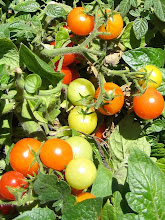Co-housing
Credit unions
Socially responsible investment
Car share schemes
My last post in 2013 was about decluttering. I had stuff taking up space in my bedroom. Boxes piled on boxes, never unpacked after two years moving into the hosue.
My interest in decluttering has evolved into my interest in minimalism.
Minimalism is a natural expression of fair share. At one level, it means making more intentional decisions on what resources you will use. What's a need and what's a nice to have. And if it's a nice to have, but I don't actually use it, then have I gone beyond my fair share of resource use for no outcome?
What got me started in February was The Minimalism Game. It's a game you can play against yourself, or challenge your friends. So I accpepted the challenge from a friend. The rules: let go of one thing on the first of the month, two things on the second, three things on the third. Sounds achievable. Until you realise by day 28 (good thing I chose February to start) I would have to give away over 400 items!
Crazily, I met the challenge. It has been so wonderful to have more space in my life. I also realised how many things weren't adding to my life.
It is more space physically and mentally.
 |
| Bench before Minimalism Game: 17 items. After: 4 items |
The Minimalism Game can be started at the beginning of any month. Give it a go! In March, my Facebook friends following me in February said we should do it in March. So we did! I let go of over 600 items in two months. Who would have thought I had that much? And there is more to go.
Through focusing on minimalism this year, I have become more mindful, more intentional. And ok with not taking a free item because I "could use it one day". I think many permaculturalists are in danger of being hoarders because we see the value in what others waste. More intentional living helps avoid this. With so many ways to access free or cheap items, when the time comes we really want to use the item, I think we will find it e.g. Freecycle, Streetbank, Ziilch.
I have become inspired by a few people who write on minimalism. Reading their emails blogs and Facebook posts gives me pause to think and encouragement to progress. My first two I recommend are The Minimalists and Becoming Minimalist.
How have you dealt with seeing every item someone is discarding as an opportunity for you to use it one day? What has worked for you in clearing the clutter?
















